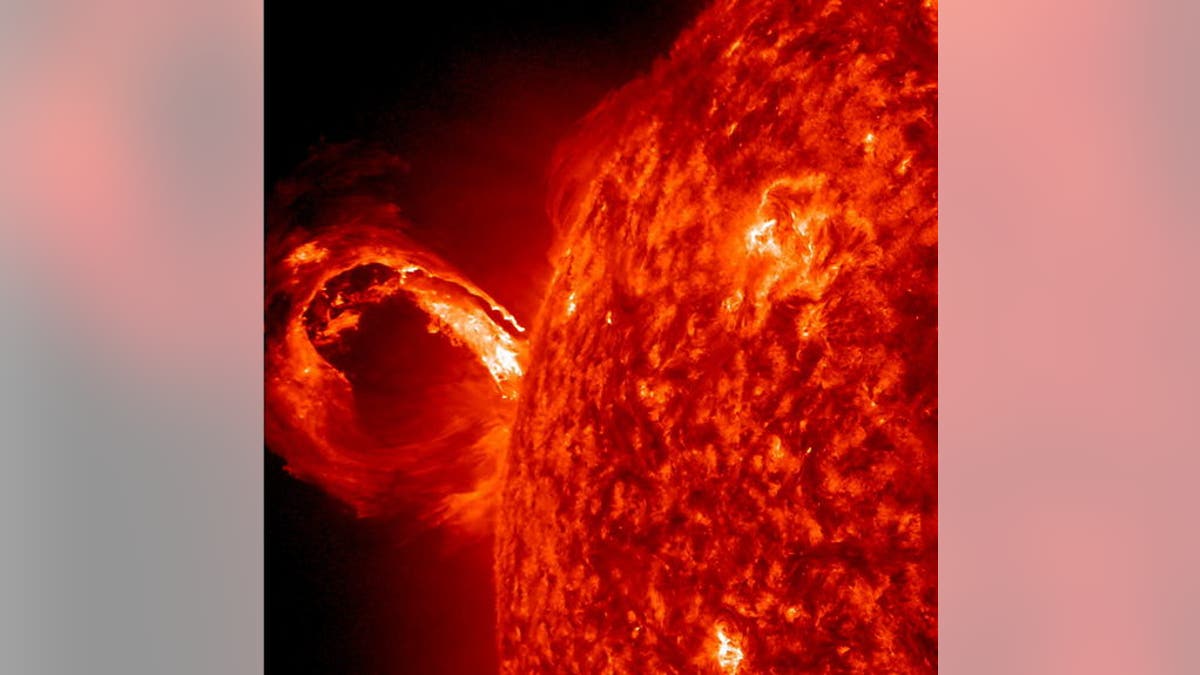
A coronal mass ejection (CME) erupted from just around the edge of the sun on May 1, 2013, in a gigantic rolling wave. CMEs can shoot over a billion tons of particles into space at over a million miles per hour. This CME occurred on the sun’s l (NASA/Goddard/SDO)
The sun celebrated May Day with a spectacular solar eruption Wednesday, unleashing a colossal wave of super-hot plasma captured on camera by a NASA spacecraft.
The solar eruption occurred over a 2.5-hour period Wednesday, May 1, and appeared as a "gigantic rolling wave" on the sun in a video recorded by NASA's Solar Dynamics Observatory, agency officials said in an image description. The solar eruption is what scientists call a coronal mass ejection (CME) — a type of sun storm that can fire off billions of tons of solar material at more than a million miles per hour, they added.
When aimed directly at Earth, the most powerful CME events can pose a risk to satellites and astronauts in orbit, as well as interfere with communications and navigation networks. They can even damage ground-based power infrastructure.
But the May Day solar eruption occurred on the side of the sun and was not aimed at Earth, NASA officials said. It produced a dazzlingly bright wave of plasma that expanded from the sun's surface and then erupted from the sun's side, or limb, into open space.
The sun is currently in an active phase of its 11-year solar weather cycle and is expected to reach its peak activity this year.
NASA's Solar Dynamics Observatory is one of several sun-watching spacecraft that keeps constant watch on Earth's nearest star to track solar weather patterns and storm events. The $850 million SDO mission launched in 2010 and records constant high-definition views of the sun in several different wavelengths, including the extreme ultraviolet range of the light spectrum used to make the video of the May 1 solar eruption.